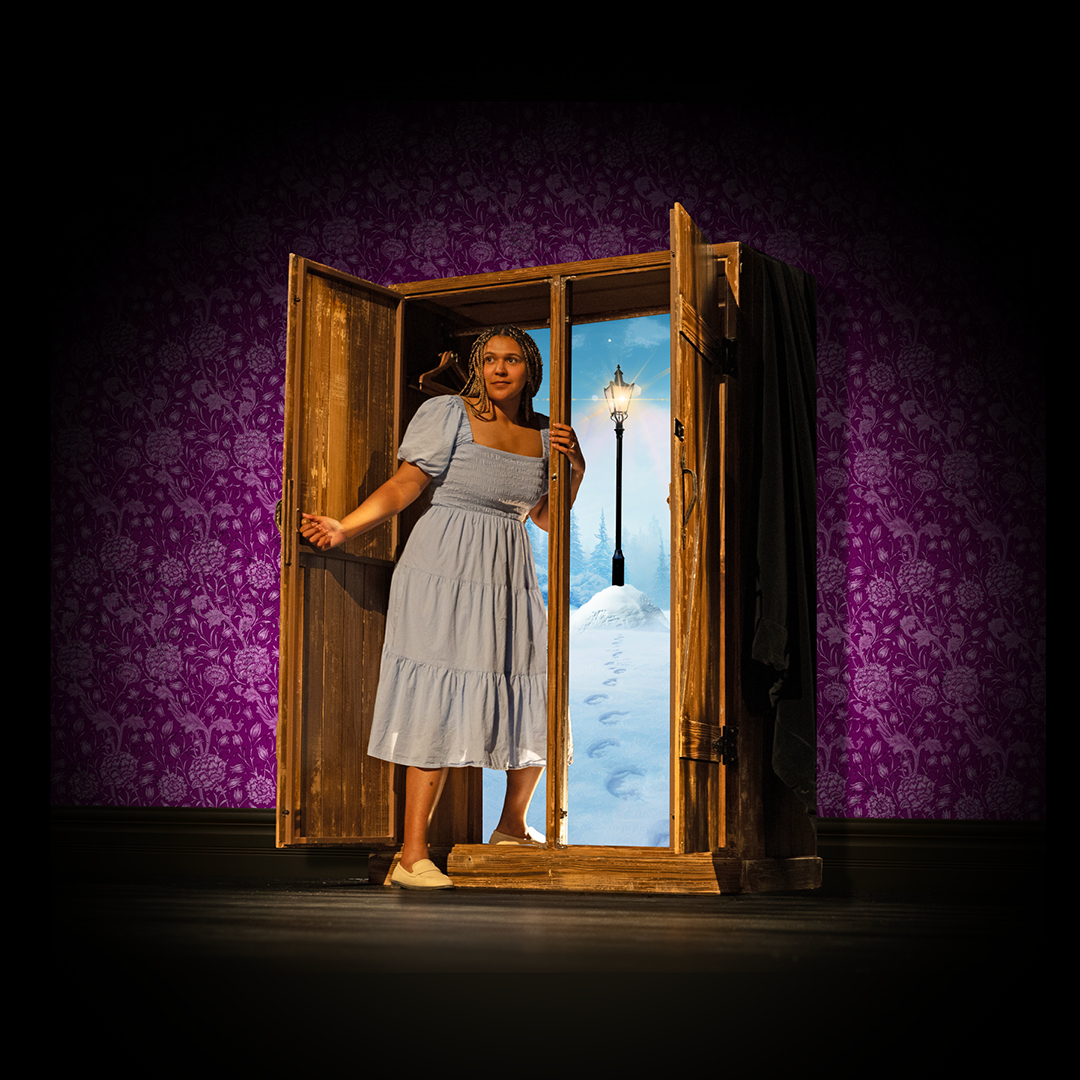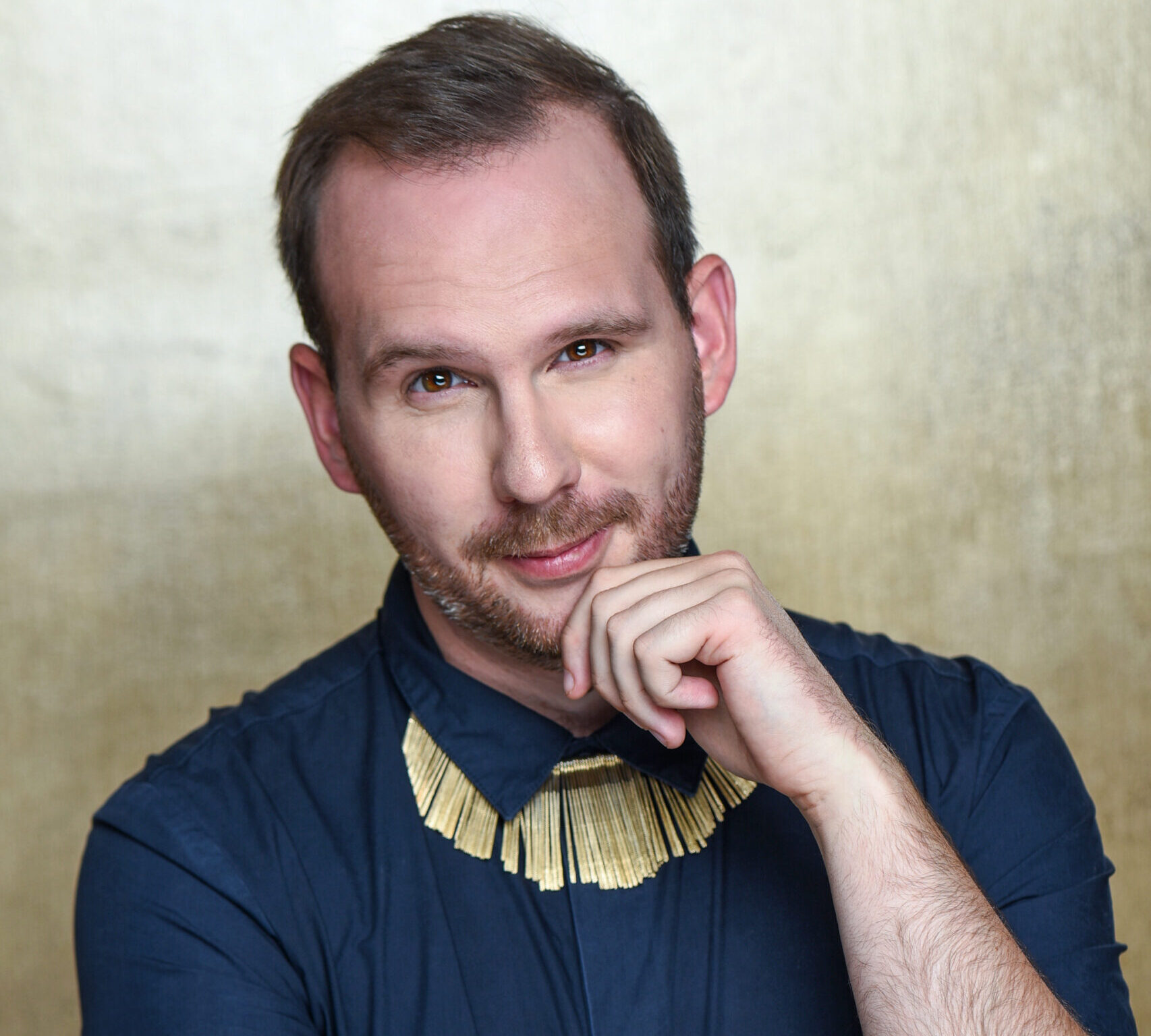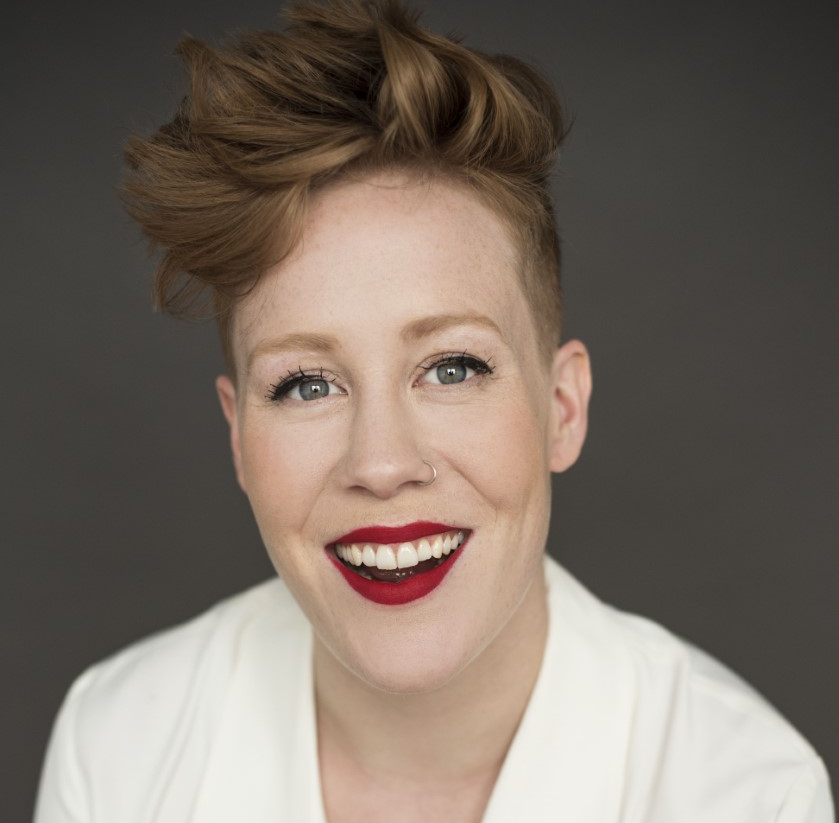
NARNIA FINDS THE MAGIC IN EVERYDAY THINGS
Matt Pilipiak is a prairie-born, Toronto-based actor, dramaturg and producer. He is also the Managing & Artistic Producer of Bad Hats Theatre. Fiona Sauder is an Ottawa-born, Toronto-based performer and director, as well as the Artistic Director of Bad Hats Theatre. They are currently in Winnipeg, as the Associate Director and Director on the upcoming Narnia, an MTYP Production of the Bad Hats Theatre play that will have its world premiere on MTYP’s Mainstage with a run from December 1 – 23rd.
Describe Narnia in three words.
Matt: Epic. Magical. Joyful.
Fiona: Family. Growth. Change.
Why did you choose Narnia/C.S. Lewis’ works as the final piece of your trilogy that includes Peter Pan (MTYP, 2019) and Alice in Wonderland (MTYP, 2021)?
Matt: I’ve always loved the world of Narnia ever since I was a kid. When you think of epic other worlds to visit or explore, Neverland, Wonderland, and Narnia are pretty much the top of the list for me (and Middle Earth, of course, but I digress…). We love telling stories where characters get to travel to fantastical places, have epic adventures, and learn something about themselves (and life) along the way. We also choose these stories because we, as creators/storytellers, want those same things: we want to go to other worlds, have epic adventures and learn something about life. Thematically speaking, we wanted to explore how we say goodbye to things, how we end chapters of our life, how we move on. Narnia felt like the right place to explore these big questions so through the wardrobe we went…
Fiona: Where Peter Pan explored the moment we realize childhood can’t last forever, and Alice In Wonderland was a window into the strange rules thrust upon us in early adolescence, we wanted the third and final piece in the trilogy to take us into an older age of life. What happens once we arrive in adulthood? It’s the age that lasts the longest, so we wanted to adapt a story that stretched across a lifetime. The Chronicles of Narnia were a perfect fit. We also knew the third piece would mark the end of the trilogy so we wanted something that could feel like a final chapter, but one that still left room for beginnings. Our adaptation of Narnia is about the changing seasons of our lives, those who teach us to notice the beauty in each of them, and how we say goodbye when certain seasons reach their end.


What role do seasons play in this story?
Matt: The seasons are one of our strongest indicators of time, of things moving on. Even when we want just one extra week of summer or the Winter to be over just a little sooner, we have no control over this; Nature will do as she pleases. Fiona very keenly identified that within ourselves we also go through similar seasons: times of summery bliss, times of autumnal change, times of wintery blues, times of spring-like growth. Much like the natural seasons, we don’t get to choose how and when we find ourselves in each season but we can find comfort in knowing that no season will last forever and our Summer will be so much sweeter after surviving the Winter. The seasons make-up the backdrop of our entire story and we arrive in Narnia seeing the disastrous effects when the unnatural occurs: when we get stuck in one season for too long. The play challenges us to keep going, to keep our seasons moving, growing, changing, and evolving.
Fiona: In our story, the seasons are a nod to many things. They represent chapters in our lives (perhaps you’re in a Winter of your life right now, or maybe you’re peaking into a type of Spring). They represent change – its inevitability, the cost of resisting it, the beauty of its potential. For example, the Witch represents the opposite of change, keeping Narnia in a forced Winter, where nothing new ever grows, whereas Aslan is the bringer of the changing seasons. Her presence lets the necessary passage of time unfold. In essence, the seasons are connected to the heart of the story which, like all the works in the trilogy, is about time; how we endure it, how we measure it, and what we use it for. Each of the children in Narnia are also representative of a certain season – we’ll let you decide which one is which for yourself.
Narnia is an adaptation of The Lion, the Witch, and the Wardrobe by C.S. Lewis – were there other books in the Chronicles that you took inspiration from? Do tell!
Matt: Yes! Although the majority of our story borrows from The Lion, the Witch, and the Wardrobe we were inspired by many different facets of Lewis’ chronicles. In particular, Reepicheep is a beloved character who appears in our retelling but was not a part of The Lion, the Witch, and the Wardrobe (he first appears in Prince Caspian). We just loved him too much to not include him. Outside of that there are little nods, or little ideas peppered throughout but I shan’t be giving them away. We want them to be little easter eggs for the Narnia lovers out there to discover for themselves.
Fiona: I would say the biggest inspiration outside the first novel in the series was Prince Caspian. We borrowed some characters like Reepicheep, whose essence is mostly the same as in Caspian, and Trumpkin, who we have completely reimagined. Beyond that there are little phrases and ideas pulled from the rest of the chronicles but they appear more subtly in our adaptation. I also looked at C.S. Lewis’ other writing and notions around time and layered some of those thoughts into the character of the Professor.
Coats are a major prop that’s used in this show. What’s their significance?
Matt: When I was a kid, I loved making forts (actually, I still love making forts). Taking anything I could find around the house to build a secret, magical structure that I could escape into. The coats serve a very similar function in our show. Coats could just be boring, everyday things you find inside a closet or a wardrobe, or, with a little bit of magic and imagination, they could be a portal into another world. Sometimes the most simple thing is the most special thing, if you look at it in a different way.
Fiona: I was so inspired by the image of a little girl crawling into a wardrobe and watching the coats transform into trees. Did it really happen? Did she imagine it? Both are equally powerful. Bad Hats is all about finding magic in everyday things and places, the way children do on a daily basis. We wanted to bring the audience into that headspace of imagination by creating a transformative wardrobe portal out of only the coats, asking them to engage in Lucy’s way of thinking as she steps through the doors. In this way, it requires their imagination to complete the image. The audience becomes complicit in the magic of the wardrobe. In addition, vintage coats are a nod to time passing through different seasons. Each one tells a story – who wore it, when they wore it, when they got it out in the Fall and when they put it away in the Spring. The coats anchor us in a sense of time, history, and legacy.
How does music work in this story to propel the plot forward? How do the songs express ideas & feelings that can’t be said through the script?
Matt: Music is our first indicator of magic in the show. It gives voice to the impossible or the unexplainable. Similarly for the characters who sing, they do so when what they are feeling is so magical, so impossible, so big that speaking it simply won’t capture the whole feeling.
Fiona: Music appears when speaking isn’t enough, when the feeling is too big. When the Wardrobe transforms, when the children go to battle, when Spring arrives in Narnia for the first time after hundreds of years – the characters can’t help but sing. We also find certain seasons have a sound to them and connected the music in each season of the play to that feeling. When things are blooming, you’ll often hear guitar, when the cold is creeping in, the bass appears, and so on. Music also appears in our show as a magic device. The ‘old magic’ has a sound to it. If you listen closely, you’ll notice any enchantments or spells made by the Witch are connected to the sound of the violin. We imagine that our central character, the Professor, had a life filled with music, and since everything in the Narnia is made from items in her strange, old house, our thinking is that each of these songs are a reference to the music that filled the lives of the children while they lived there.
A family comes to see Narnia for the holidays. What do you hope they’re talking about on the car ride home?
Matt: What it would be like for them if they went to Narnia. What kind of adventures they’d have, the people they’d meet. How they’d get to Narnia and how they might play Narnia themselves when they get home.
Fiona: The things that make their lives and connections to one another uniquely special. Uniquely magic. Uniquely theirs.
Narnia runs from December 1-23 at MTYP. Tickets can be purchased online or by calling the Box Office at 204-942-8898.

